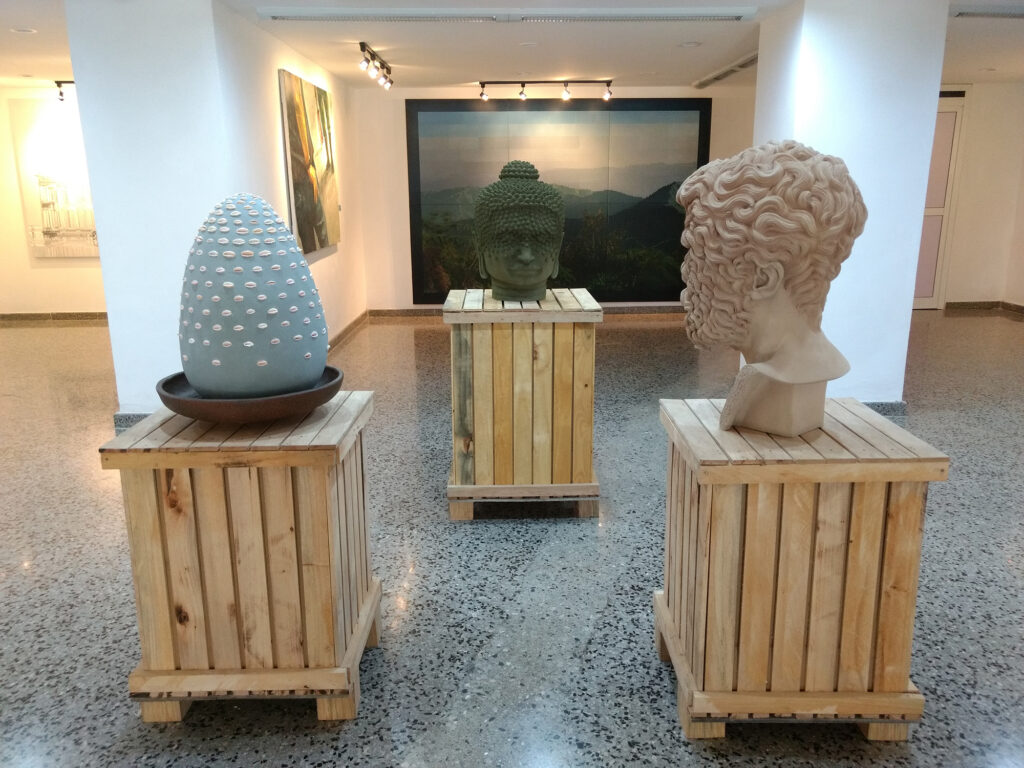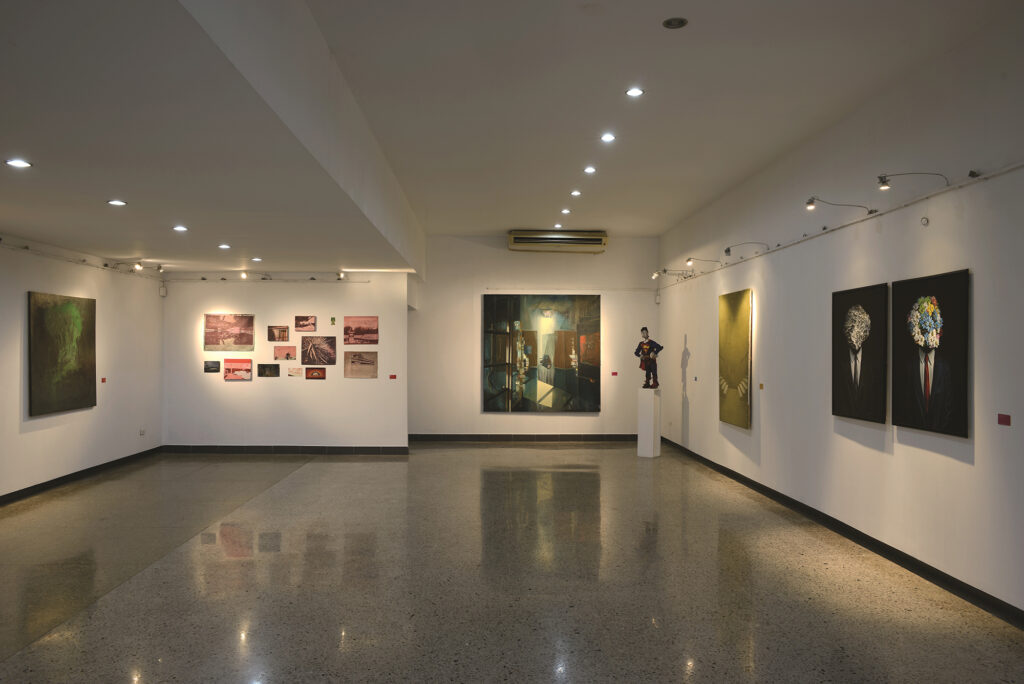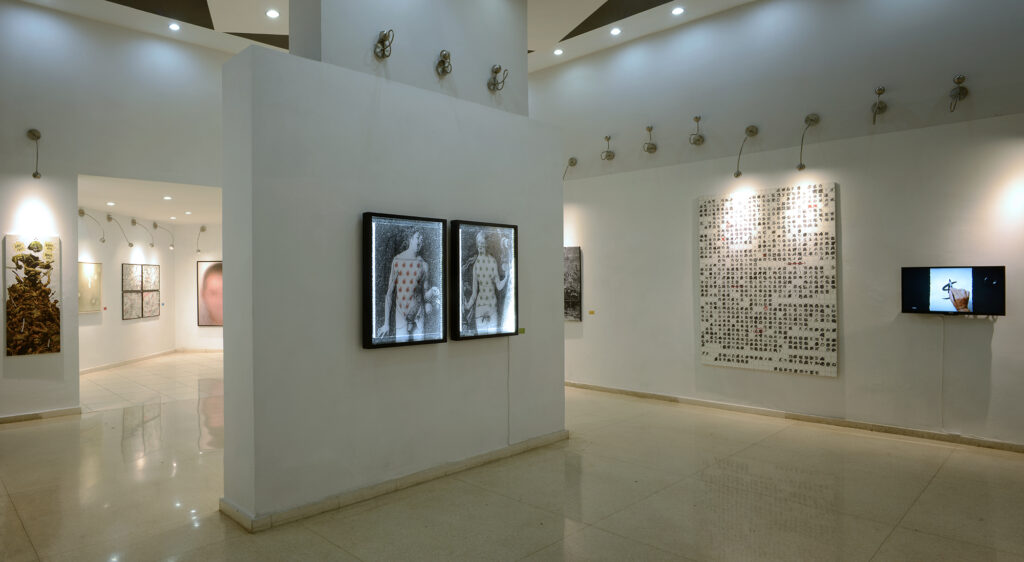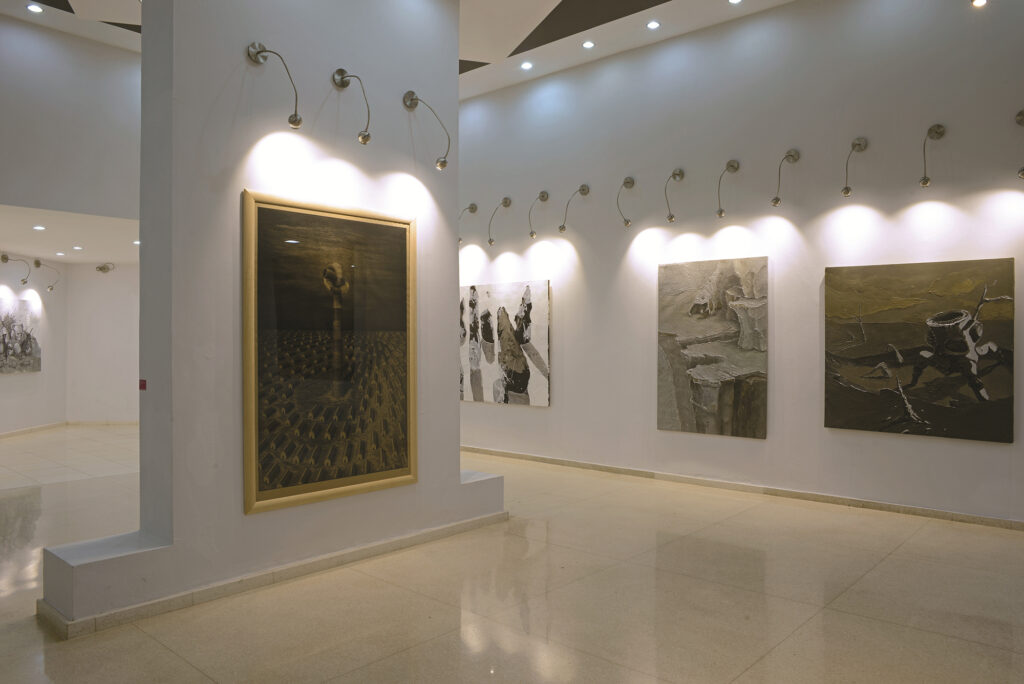POST-IT, A Contest for Young Artists
– By Sandra García Herrera –
Visit the Virtual Reality Exhibition of the current issue: POST-IT 7
Among the young Cuban artists of the last decade there is a name that continues to be mentioned: Post-it. Sometimes to approve, others to question, but the truth is that this visual arts contest has achieved a space in the historiography of Cuban art.
It began in 2013 at the initiative of the Cuban Fund for Cultural Assets, a Cuban company dedicated to the promotion of art and crafts in Cuba, and one of the merits of its organizers is in having realized the need and lack of competitions of this type in the panorama of Cuban visual arts.

WHAT IS POST-IT?
Post-it is an art contest focused on the production of Cuban artists under 35 years of age.
It is inclusive because it allows artists from all over the country to present up to three works in any of the manifestations of the visual arts (painting, sculpture, engraving, drawing, video art, performance, etc.).
In each edition, prestigious Cuban artists, curators, gallery owners and art critics are invited to form part of the selection committee and the award jury.
The selected works are part of a collective exhibition that, depending on the quantity and characteristics of the ensemble, has occupied up to four galleries in Havana.
The prizes consist of the opportunity for each of the winners to carry out a personal exhibition in professional galleries in the city, as well as the delivery of an economic endowment with which they can support the production of their work.
WHAT DIFFERENT POST-IT FROM OTHER CONTESTS ORGANIZED IN CUBA?
Art in Cuba has a long tradition of salons and contests since the first decades of the 20th century.
With the triumph of the Revolution in 1959 and from the creation of institutions for the development of art in all its manifestations, these calls were diversified, which came to specialize in manifestations (painting, engraving, sculpture); categories (for students, for teachers, for amateurs); and themes (landscape, portraiture, erotic art, naive art, small format).
It is worth noting that none of these contests had a commercial nature, since the galleries and exhibition spaces that hosted them did not have the licenses that would allow them to sell the works on display.
Cultural policy insisted that the role of galleries was to offer a panorama of the visual arts to the public, while promoting the work of artists. Art marketing schemes were not a priority.
The situation changed with the creation in 1984 of the Cuban Fund for Cultural Assets (FCBC), the first Cuban cultural company, among whose social objectives was precisely the commercialization of works of art. From then on, the merely promotional galleries began to differ from the commercial galleries.

While the former had the objective of promoting the artists and their works, the latter, in addition to promoting, had to draw up strategies to also achieve the commercialization of the exhibited works.
Everything happened in a context marked by the almost total absence of an internal art market – a subject that deserves separate analysis – that could contribute to the sustenance of national artistic production.
That is why we worked on the presentation of Cuban artists in exhibitions and international art fairs, with the intention of being able to make sales and meet new clients who could visit Cuba to acquire works of art.
With this background, and in view of the disappearance of various events in the early years of the 21st century, the idea of organizing Post-it arose, a contest that responded to two prevailing needs for the most emerging Cuban art: interest in art produced by artists under 35 years of age (and as such, those most in need of support); and the real possibility of legally commercializing their works through a gallery authorized to do so.
Precisely both factors have motivated dissimilar states of opinion on the part of critics, artists, and intellectuals: some believe that the commercial nature of the contest undermines the aesthetic and conceptual validity of the participating works; Others do not trust the artistic institution in Cuba and its ability to propose and legitimize artists or works; but not a few declare the validity of the project.
What definitely differentiates Post-it from other art competitions in Cuba? Its ability to combine in a single event different urgent needs of emerging art in Cuba: the availability of exhibition and promotion spaces (galleries in good condition); support in the production of the work (through financial endowments that are awarded as prizes); the provision of means of communication according to the awarded artists; promotional and logistical support in the production of a personal exhibition (in many cases, the first solo show for a young artist).

THE MARKET
From the perspective of the market, Post-it has carried a kind of stigma that pigeonholes it as a purely commercial event, whose sole purpose is to “trade” with the work of young artists. In fact, his main interest is the promotion of these creators.
Obviously, the founders of the contest conceived it from the certainty that important figures in Cuban art could emerge from these young generations in the future.
And sustained support and promotion from the institution could keep dialogue and collaboration with artists intact; something that inevitably could also have commercial results.
It is still too early to consolidate that relationship. In fact, the link with some of the winning artists has been lost, due to the continuous changes of gallery owners and directors, each with new conceptions and work strategies, some more successful than others.
As for the economic results, they have perhaps not been as expected, although in each edition of the contest at least one work has been sold.
During the first editions, the inauguration of the contest exhibition benefited from the reestablishment of relations between Cuba and the United States; a fact that modified the situation of the Cuban art market. Visits were received from important North American collectors and gallery owners who were interested in closely following the careers of some of the participants.
The idea of holding the contest always on the same date (September of each year) was intended to create a precedent for future travel agendas for collectors to Havana.
Certainly, an ideal conception of the contest included the scope of a portfolio of clients with which to offer sales opportunities to all participating artists, in order to be able to support the production of their works even without having been awarded.

THE PRINT OF A CONTEST
After six editions, a constant is repeated among the creators who decide to present projects before the decision of the jury: many of these young people are not even interested in obtaining one of the prizes provided by the contest, but the mere possibility of being selected and exhibiting their work in the competition sample is the fundamental reason that drives them to present themselves.
Because they have precisely verified – from the experiences of other participating colleagues in previous editions – that the contest exhibition is an opportunity for visibility before a specialized audience, from which invitations arise from curators to participate in other projects; galleries that offer you personal exhibitions; and they also begin to be the object of attention from critics and researchers … and they have the possibility of selling their work.
Some of the participating artists, even though they were very young, have experienced the invitation to the payroll of a Cuban or foreign gallery, which from then on began to represent them.
On the other hand, the economic endowments awarded to the winners (3,000 and 1,500 CUC) are considerably high compared to other similar competitions in the country and even internationally. A brief investigation on the Internet about visual arts competitions for young artists allowed us to know that, with very specific exceptions (such as the Luxembourg international prize for emerging artists, to name a few), most of these events offer much lower prizes than those awarded by Post-it.
During the decade, aid programs for cultural and artistic projects by embassies established in Cuba had been regularized, the most notable cases being those of Norway, Switzerland, Holland, Austria, and Spain. These ways of helping the production of a specific work or exhibition filled a space not occupied by the cultural institutions of the country. Post-it, on behalf of the Cuban Fund for Cultural Assets, was then inserted as another valid option, but now facilitated by an institution of the Cuban State.
This circumstance began to regenerate the dialogue between artist and institution; and managed to get many creators to regain their trust in the work of the galleries governed by the Cuban Fund for Cultural Assets.
Finally, the results of each edition of the contest are recorded in a catalog designed by young Cuban designers and with an unquestionable print quality. The opportunity that represents for an artist in training that his work is cataloged in a printed material, means the permanence in a document that can be consulted by later generations.
One of the expressions that summarize the importance of the contest for Cuban art is the one that refers to a “Post-it generation”, referring to the contestants and winners of the first two editions. They are young people who had already been making themselves known and whom the contest ended up legitimizing in the contemporary Cuban art scene.

Sandra García Herrera (Havana, 1988) is the Gallery manager at Galiano Gallery, Havana, since January 2015. She is Member of the Hermanos Saíz Association (AHS) in the Criticism and Research Section, since 2008 and has a degree as Master of Art History, Faculty of Arts and Letters, University of Havana, since September 2017.




